
When you have a recreational vehicle (RV), the onboard water system makes a huge difference in your comfort while you travel. This water system controls the shower, toilet, and a working sink.
RV water tanks are a critical component of your RV and its water system. Whether you are a current owner, plan to buy an RV, or rent RVs for travel, it is helpful that you understand how the water system works.
Types of Water Tanks for RVs
In general, there are three types of water tanks in an RV. They vary in location and size and are typically made from polyethylene plastic or ABS.
In addition, there is one for freshwater, gray water, which is waste from showers and sinks, and black water, which is the wastewater from a toilet.
1. Fresh Water Tank
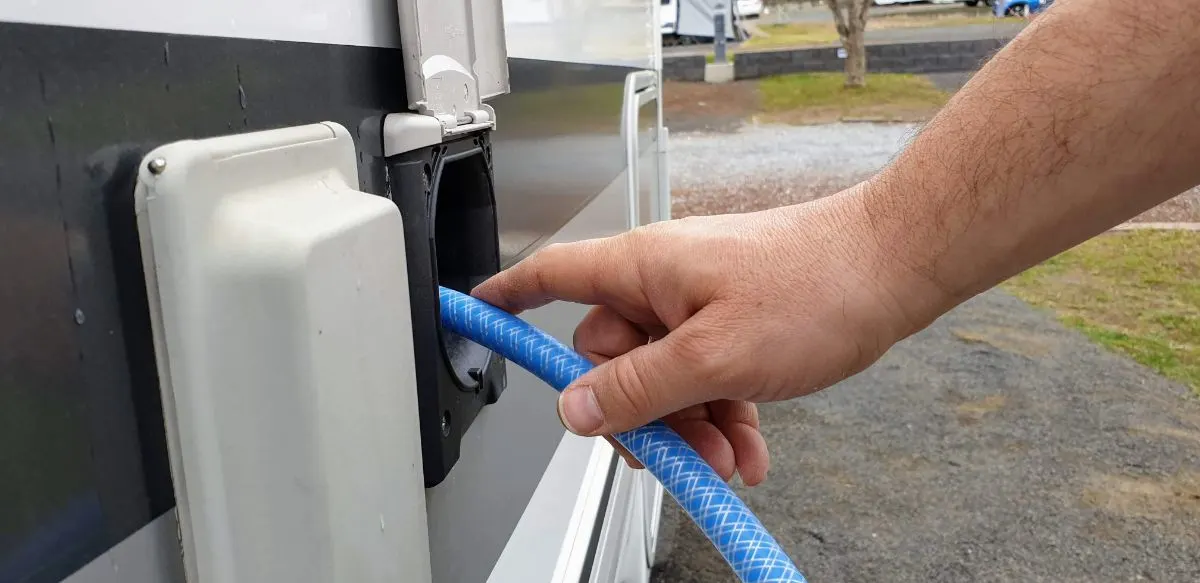
A freshwater tank is also referred to as a clean water tank. These tanks are made from a seamless polyethylene plastic. This tank holds the water for your shower, toilet, and all your sinks.
When you stop at a campsite that welcomes RVs and offers hooks up provides a freshwater supply. Once you hook up your freshwater tank to the clean water, it flows through the water pipes and goes to your shower, sinks, and toilet.
A freshwater tank can vary depending on the layout and size of the RV. They typically hold as much as 20 gallons to 100 gallons. You want to ensure any new freshwater tank you purchase is BPA free. Although, you can find tanks that are made of metal that are corrosion resistant.
The clean water tank is the largest of all the tanks. When you hook up to your clean water tank, you want to ensure that you use a potable water hose. This is a white colored hose so that you do not cross contaminate with wastewater.
The potable water hose is only intended to be used with the clean water tank. Potable water is the same thing as clean water. This ensures that the water in the tank is clean to drink. You do have to maintain the tank to keep it safe for drinking water.
Fresh Water Tank Maintenance
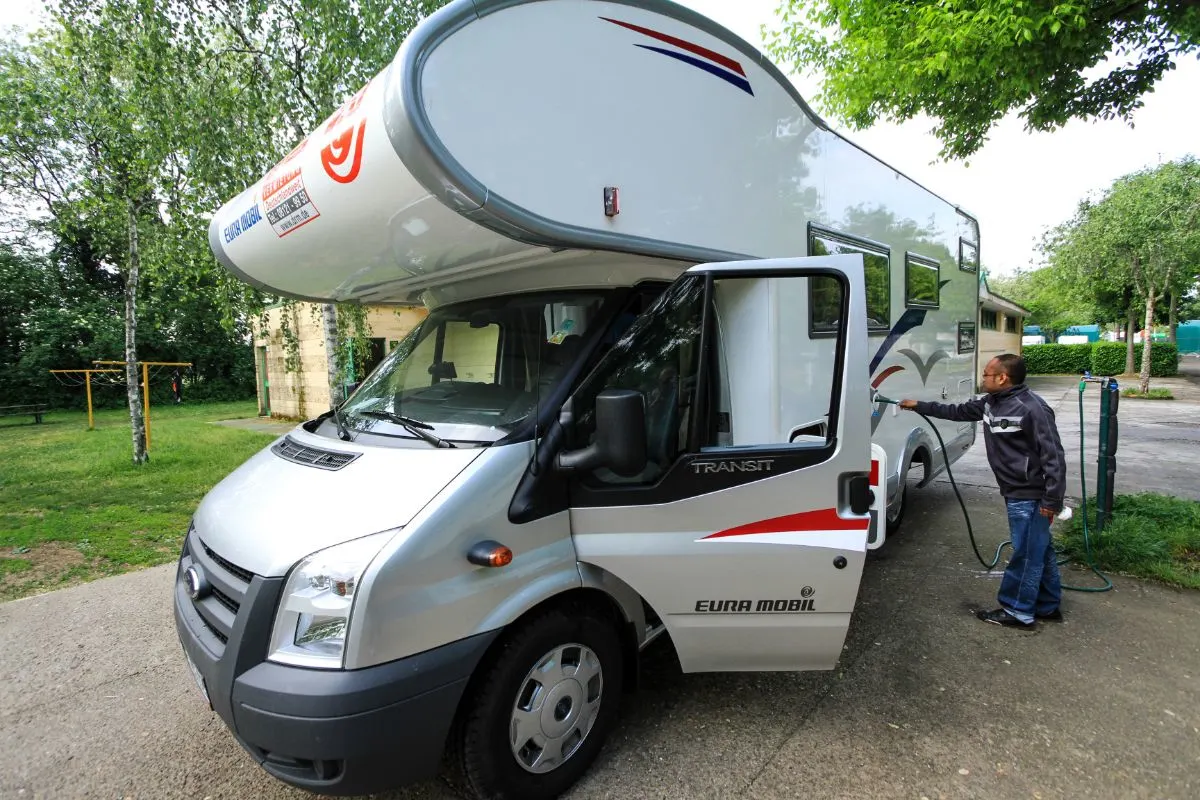
The potable water drinking hose is lead free, phthalate free, BPA free, and does not leave a plastic taste in your water. You can also put a filter in the line to ensure you get the best tasting water.
An advanced carbon filter reduces odor, chlorine, sediment, and bad taste. Because the filter traps sediment, it can help to prevent clogging the faucets, which makes maintenance easier. When you hook up at a campsite, you want to pay attention to the water pressure at the different fill or stay and connect sites.
When the freshwater supply pressure becomes too low because of the hook-up at the site, your sinks and showerhead might only release a trickle while connected directly to the water source.
To address this concern, you can rely on the holding tank and the onboard water pump to supply the system water. However, too much pressure is also a bad thing because the pipes can burst and leak.
The best way to ensure that the pressure of your water system is where it should be is to use an inline water pressure regulator whenever you connect to an outlet.
The maximum water pressure for an RV is 50 for older models and 60 PSI for newer models and motorhomes out there; most city water connections flow under a minimum 75 PSI.
When you are not actively using your RV, you must drain all the water out of your RV or make sure the tank is full. This makes sure that air moisture does not encourage contamination in the tank. When odors start on the inside of the tank, you should use bleach to sanitize the tank.
You want to mix one cup of bleach for every 15 gallons of water and fill the tank. It would be best if you let the solution sit. Also, pour some of this solution at the toilet, shower, and sinks. Then you can drain out the solution and let the tank to sit for at least a day to dry.
2. Gray Water Tank
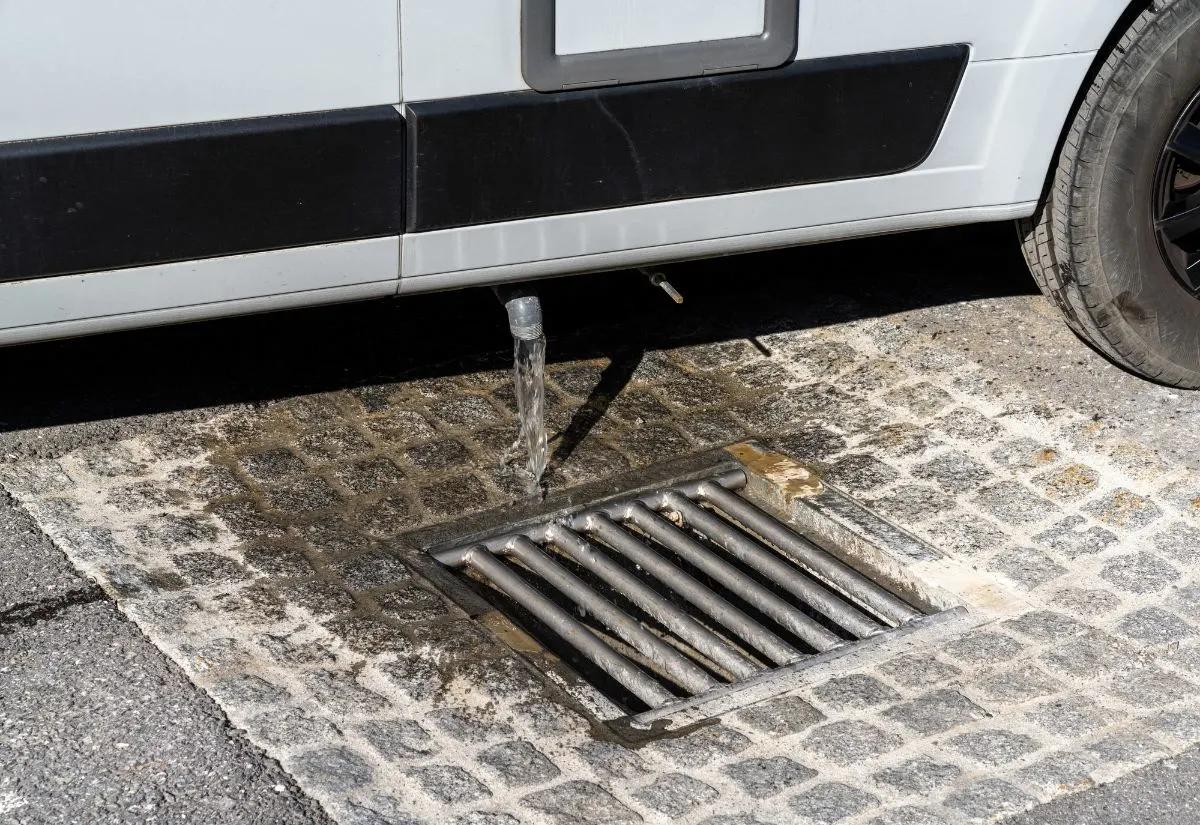
While water comes into your RV through the clean water tank and goes to the sinks and showers. From there, it goes down the drain. From the drain, it goes into the gray water tank. The gray water tank holds up to 50 gallons of water.
The only water that goes into this tank is from the shower or sink. It can also collect water from your washing machine if you have one in your RV. It does not come from the toilet.
The holding tank for gray water is typically the first one to receive and collect wastewater. You may have more than one gray tank in your water system. It could also be called the galley tank. You do not want to use this water for anything.
It is not the dirtiest water, but it certainly is not fresh, and you do not want to use it. The gray tank typically holds a few days of wastewater, depending on how many people you have on your RV and how much water they use.
You can minimize how much water collects in the tank by reducing how much water you use. You can do this by not leaving the water running when washing your face, brushing your teeth, or shaving.
You can also save water while taking a shower by turning on the water briefly to wet yourself, soap up without water, then turn on the water to rinse off the soap.
3. Black Water Tank
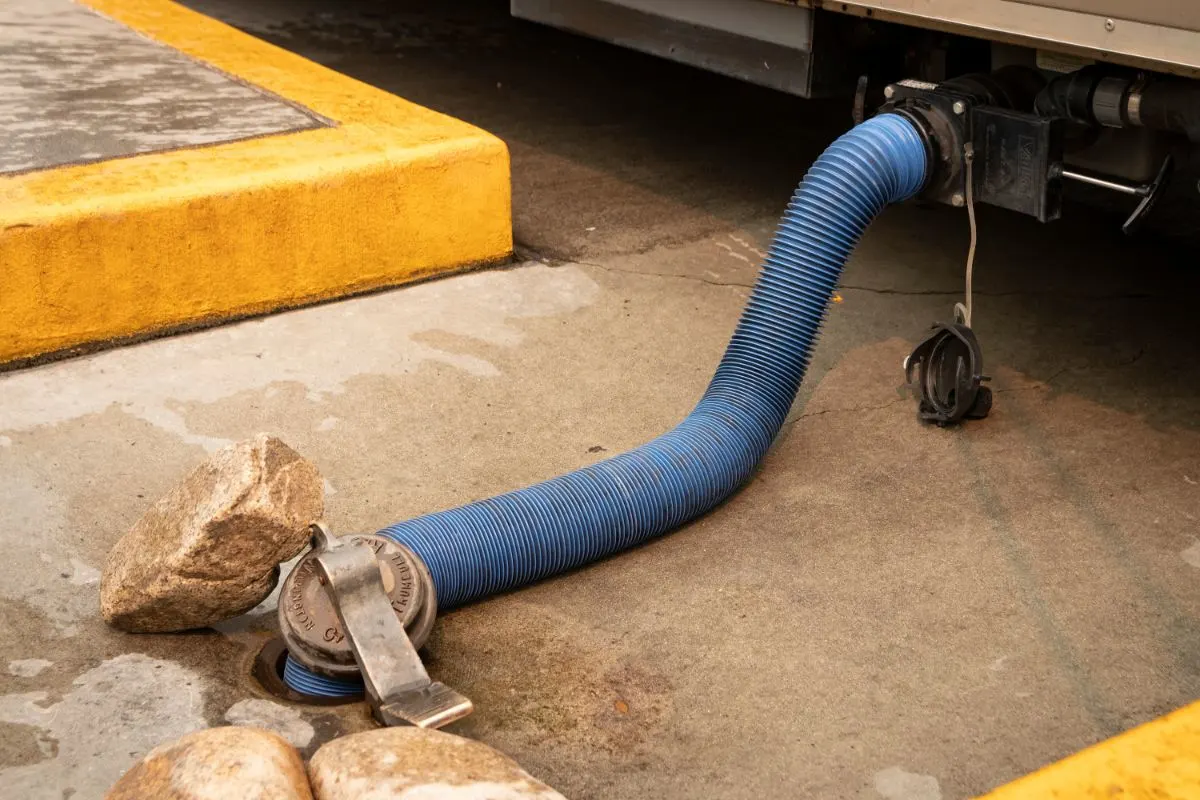
The black water tank is a second holding tank that holds the water that is directed when you flush the toilet. In addition, this tank holds the sewage that comes from your toilet. The size of the black water tank varies based on the size of your RV.
In general, these tanks have a 40 gallon to 70 gallon capacity. This water is helped in a separate tank because while some campsites allow you to dump gray water in certain areas or in the grass; however, black water must be dumped in a certified dumping area.
If you attempt to dump the black water tank in a non-approved area, it is gross but also subjects you to fines. The drain valve on the black water tank should stay closed until the tank reaches its full capacity.
The reason for this is to allow the solids time to break down so the water can be easily emptied when you fully open the valve. While you are traveling, you should inspect your RV dump valve on a regular basis. You want to perform maintenance, especially if the valve is difficult to close or open.
You can neutralize the smell and break down solids by adding clean water and chemicals by flushing them down the toilet after using them. While you travel, this solution sloshes around the tank, and it helps to deodorize your RV.
You want to make sure that you use toilet paper that is rated for RV use. This toilet paper dissolves quickly and easily. It helps to prevent clogs in the sewer system and makes the dumping of the wastewater easier.
Black Water Tank Maintenance
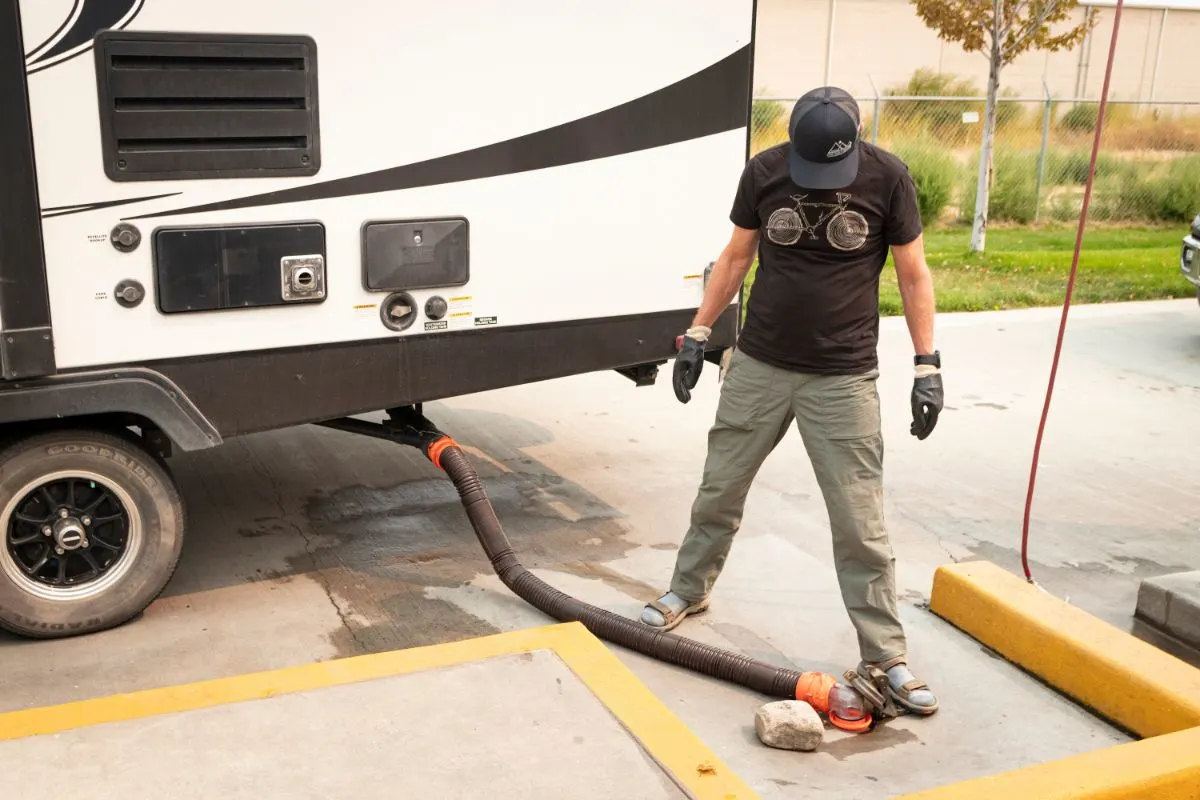
You will have to empty the collected waste at some point. To do this, you will have to locate a dump station that is specifically designated for collected waste. This can be at a campsite, RV park, or some truck stops. To do this, you must use the RV sewer hose.
It is connected tightly between the sanitation center of the RV and the dump station receiving portal. It is highly recommended that you dump the black water first. You want to ensure that the gate valve is completely closed before you open the gray tank valve.
When you can, you should wait until your black water tank is close to full before you dispose of its contents. Waiting for this period ensures that you can generate the needed water pressure for the waste to flow smoothly and thoroughly instead of leaving behind remnants in the tank and hose.
How Do I Empty the Tanks of My RV?
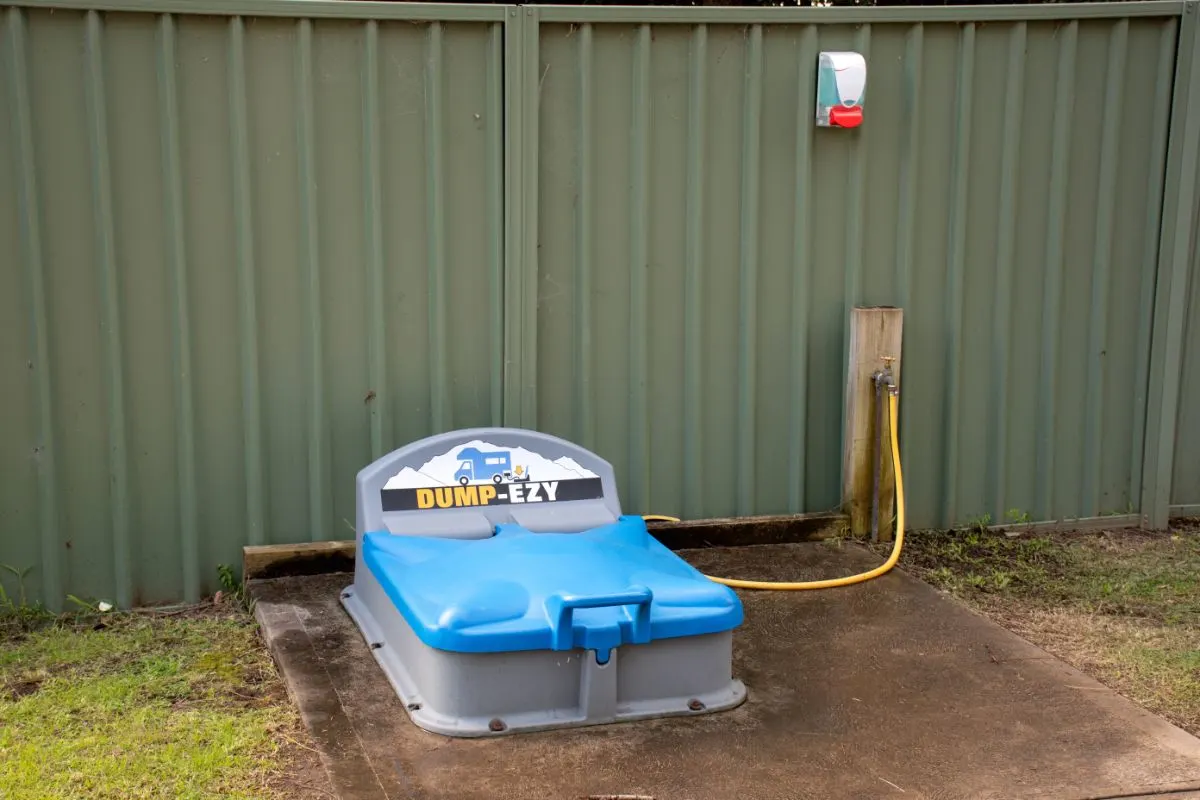
Before you begin to make your first wastewater dump, you want to ensure that you have a sewer hose and gloves to wear to protect your hands. Next, you want to ensure that you know the identity of the valves on the outside of your RV.
They should be clearly marked black and grey. Then you want to be sure to hook your sewer hose up to the proper valve on the RV. Then you want to take the other end and secure it to the sewer. Finally, you want to make sure that it is tightly fastened on both ends.
It would be best if you started with the black tank first. This is the toilet wastewater that is being dumped directly into this tank. It is critical that you dump this water in designated dump stations, which are always clearly marked.
To empty the tank, you want to pull the valve to let the tank drain. When you can no longer hear the liquid coming from the hose, you can close the valve. You want to be sure to close the valve once it is empty completely.
This is critical. You do not want to leave the black tank valve open because it may cause the liquid to flow out and leave solids in the way of draining.
When you know the valve is completely shut, then pull the grey tank valve. Again, you want to be sure to close the valve when you are finished.
Some leave the gray tank valve open on the outside of the RV to let it drain continuously. This is a mistake, and you should not do this. When you flush the gray tank after the black tank helps flush solids stuck in your sewer hose.
When you keep the valve open, you will not have that extra water to flush out the sewer hose after the black tank. For easy clean up, you want to take it slow when you detach the sewer hose. It would be best if you considered using a bucket or tub to contain the hose when you are not using it.
How To Maintain The Tanks In My RV
When the temperatures reach freezing cold, any of the holding tanks in your RV may freeze. They can even become solid. Even a minor freeze can result in a large amount of damage that can become costly. It can also result in a high amount of downtime.
If you do not plan to use your RV once the weather gets cold, you should completely dump all of the liquid in the holding tanks.
You can also blow out or run anti-freeze for an RV Anti- freeze through the hot water heater and potable water supply lines. You want to ensure that you pour the same anti-freeze down all drains and sinks and even a small amount down the toilet.
If you are planning to use your RV in a cold climate or during the winter months, you may have some issues that could pop up during cold weather. You should have a plan and system in place to protect the water systems and holding tanks from freezing up.
Any water, tanks, or water lines that are inside the cabin are okay because they use the heating from your compartment during use.
Everything that is in the “basement” or below the floor that you want to concern yourself with as this area is prone to temperature adjustment that matches the cold from the outside, which means any unprotected systems may freeze. Holding tanks need to have direct contact with an electrical heater.
However, a tank heater alone is not enough to protect your water systems. The pipes that exist between the waste tank and the low point drain valve, also known as the dump valve, are the first to fill. If these tanks are left not heated, then they may freeze closed.

